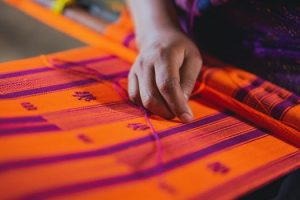Sustainable Fashion Technologies Eliminate Environmental Waste Completely
Sustainable fashion has become a hot topic in recent years as consumers become more aware of the damaging impact of fast fashion on the environment. As a result, many fashion brands and retailers have started implementing new technologies to reduce their environmental footprint. From using sustainable materials to implementing eco-friendly production processes, these advancements in fashion technology are helping to eliminate environmental waste completely. In this article, we will explore the various ways in which sustainable fashion technologies are revolutionizing the industry and their impact on the environment.
The Problem with Fast Fashion
Fast fashion has taken the fashion industry by storm, offering consumers trendy and affordable clothing at an unprecedented speed. This business model relies on cheap labor, mass production, and frequent product turnover to keep up with fast-changing fashion trends.
However, this unsustainable approach comes at a cost to the environment. The fashion industry is the second-largest polluter in the world, producing 10% of all carbon emissions and consuming 79 trillion liters of water annually. Additionally, the synthetic fibers used in many fast fashion pieces are not biodegradable, and their production releases harmful chemicals into the environment.
The result? A staggering amount of waste that ends up in landfills or pollutes our oceans.
Sustainable Materials
One of the key ways in which fashion brands are tackling this problem is by using sustainable materials. Designers are turning to organic, recycled, and biodegradable materials such as organic cotton, Tencel, and bamboo to create their collections.
Organic cotton, for example, is grown without using harmful pesticides and requires less water compared to conventional cotton. Tencel, on the other hand, is a sustainable fabric made from wood pulp and uses a closed-loop process that recycles up to 99% of the water and solvents used in production. These materials not only reduce the environmental impact of fashion production, but they are also biodegradable, unlike their synthetic counterparts.
Eco-Friendly Production Processes
Aside from using sustainable materials, fashion brands are also implementing eco-friendly production processes. This includes using renewable energy sources, reducing water consumption, and recycling waste.
One such example is Nike’s “Move to Zero” initiative, which aims to lessen the brand’s environmental footprint by producing Nike products with sustainable energy sources, using recycled materials, and diverting their waste from landfills. As a result, Nike has been able to significantly reduce the amount of CO2 emissions and waste across its operations.
3D Printing
Another technology that is gaining popularity in the fashion industry is 3D printing. This production method allows designers to create precise and customizable pieces while using fewer raw materials and generating less waste.
3D printing can be particularly beneficial for creating complex and intricate designs that would typically require a significant amount of fabric and produce a lot of waste. By using this technology, fashion brands can reduce their environmental impact and offer unique and innovative products to their customers.
Circular Fashion
Circular fashion is a concept that aims to keep clothing in use for as long as possible and then recycle them to make new garments. This approach eliminates the need for raw materials and drastically reduces waste.
The adoption of circular fashion in the industry has led to the development of innovative technologies such as fabric recycling and upcycling. Companies like The Renewal Workshop and Evrnu are leading the way in recycling fabrics and creating new ones from old or discarded garments.
The Future of Sustainable Fashion Technologies
The use of sustainable fashion technologies is on the rise, and as technology continues to advance, we can expect to see even more innovative solutions to eliminate environmental waste in the fashion industry.
From advancements in material production to the use of artificial intelligence for more efficient supply chain management, these technologies will help reduce the harmful impact of fast fashion on the planet.
Last Thoughts
As consumers, we have the power to drive change by choosing to support fashion brands that prioritize sustainability and invest in eco-friendly technologies. By doing so, we can push the industry towards a more sustainable and responsible future, where fashion and environmental impact are not mutually exclusive. With sustainable fashion technologies, we can eliminate environmental waste completely and create a more sustainable future for fashion and our planet.











